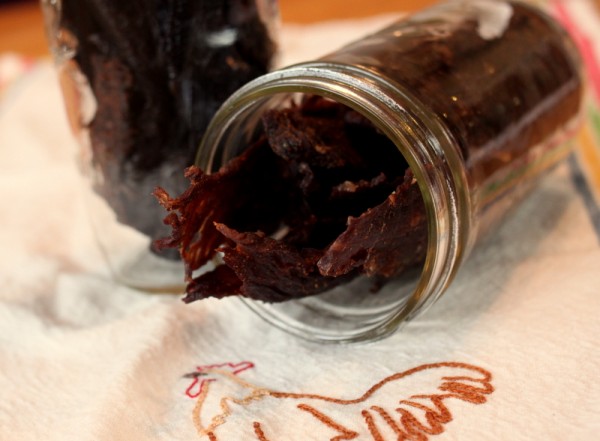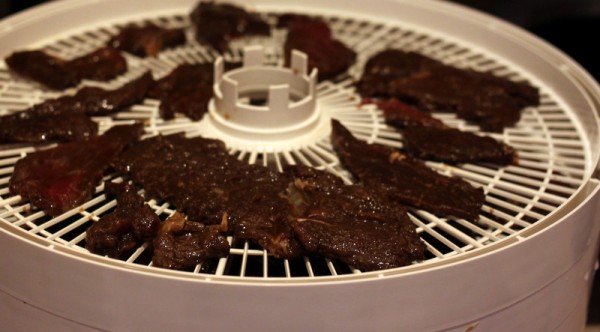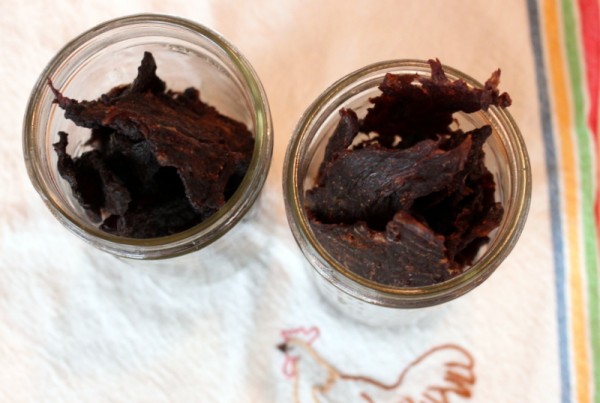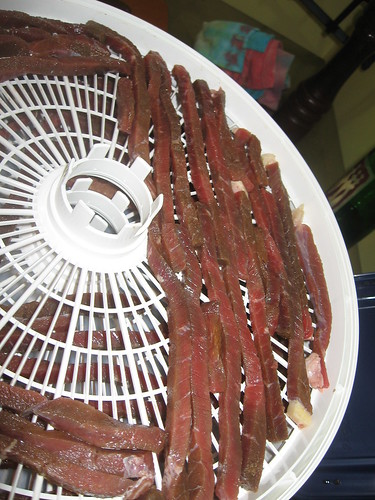Jerky. This unattractive but nutritionally dense snack is something my family often neglects for months at a time. Then we'll remember and binge on homemade meat treats again.
Jerky appeals to the current paleo, low-carb, and low-fat diets. It's also free of most allergens and simple to make without extra equipment; we made it for many years in the oven before adopting the neglected dehydrator living in my parents' basement. Like many good things, jerky takes some time but not much active interaction. You simply cut the meat, marinate overnight, and dry the next day.
Lower fat meats work best for jerky. Turkey jerky, made from a whole turkey breast, is one of our favorites. This time around we used bison from Ohio Bison Farm for a beefy flavor.
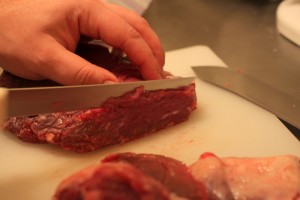
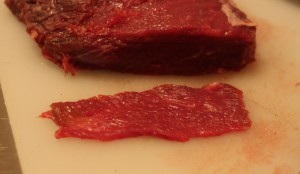
Whether you cut with or against the grain is up to you. Cutting with will result in a chewier product, against is more tender but may fall apart in a finely grained cut of meat.
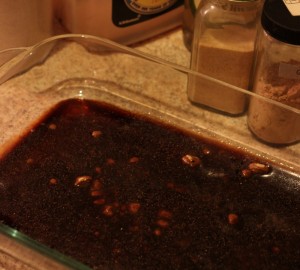
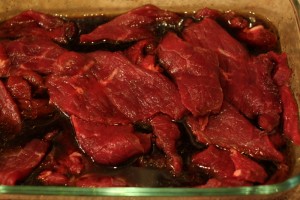
Dehydration provides the preservative effect. The USDA recommends starting the drying process by heating the meat to 160 degrees F and then dehydrating at 140 degrees or the lowest temperature your oven will allow. Our dehydrator has a maximum temperature of 145 degrees F which is what we've always used.
Store jerky in a glass jar or other air-tight container in a cool dry place like a kitchen cupboard for up to two months. You may also freeze jerky.
The whole family will be at the Clintonville Farmers' Market this Saturday, January 26, from 10:30 - 12:30 drying and sampling jerky. Stop in to shop for local foods and talk to us!
Bison Jerky Makes about 30 large pieces to fill quart jar Time: 2 days, 30 minutes active
1 pound bison roast per marinade recipe below; our four layer dehydrator can fit 2 pounds
Teriyaki 1/3 cup soy sauce (use wheat-free for a gluten-free product) 3 tablespoons rice vinegar 2 teaspoons honey or granulated sugar 2 tablespoons water 10 grinds black pepper 1 teaspoon ground dried ginger 1 teaspoon garlic powder 1 teaspoon sesame oil 1 tablespoon olive oil dash Sriracha (optional)
OR
Down East 2 teaspoons Old Bay seasoning 1 tablespoon honey 1 tablespoon lemon juice 1 teaspoon salt 1/2 teaspoon garlic powder 1 tablespoon olive oil 1/2 teaspoon paprika 1/2 teaspoon chili powder
1. Slice bison roast into very thin (1/8 inch) pieces. Pound uneven pieces thin with a meat tenderizer. 2. Mix all ingredients for one of the marinades and place in non-reactive glass or plastic pan. 3. Add jerky to pan, mix and cover. Marinate in refrigerator 24 hours. Stir once during this resting period. 4. Place meat in a single layer in a dehydrator or on cooling racks settled on cookie sheets. Dry at 145 degrees F or in a very low oven (as low as yours goes, or 200 degrees F with the door ajar) for 5-8 hours or until jerky is dry throughout and yields no moisture when broken in two. 5. Allow to cool. Store in an airtight container for up to two months.

